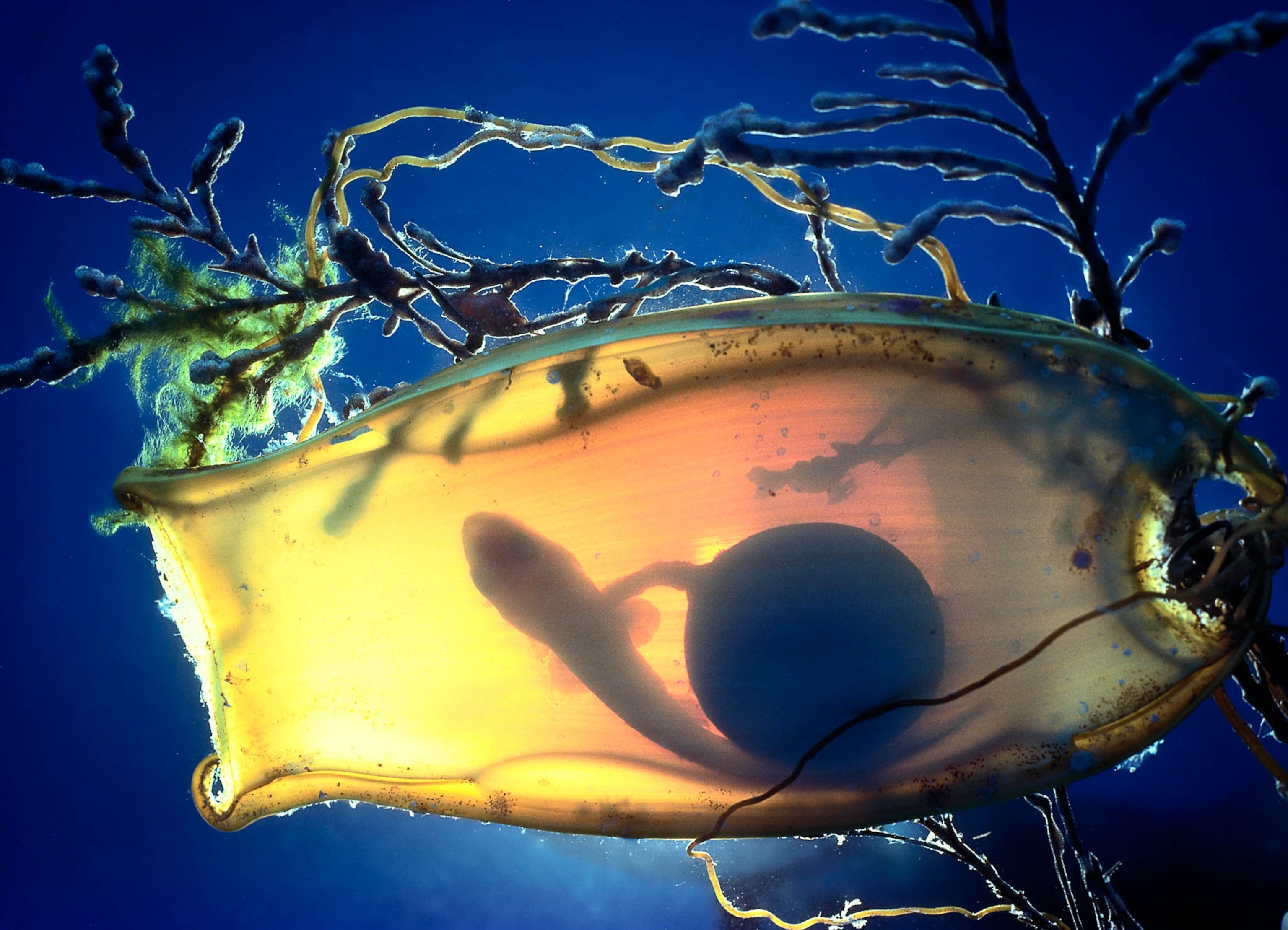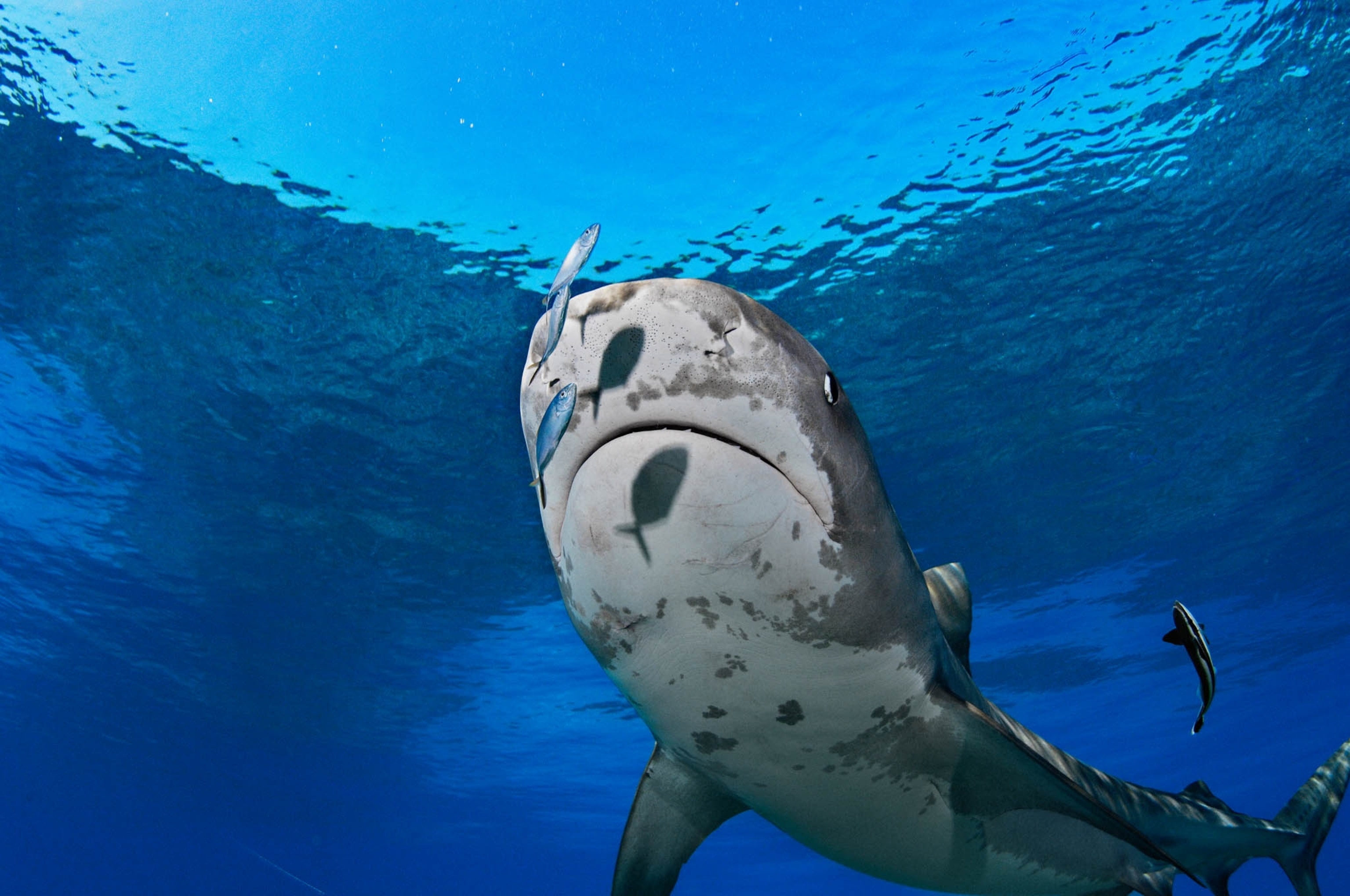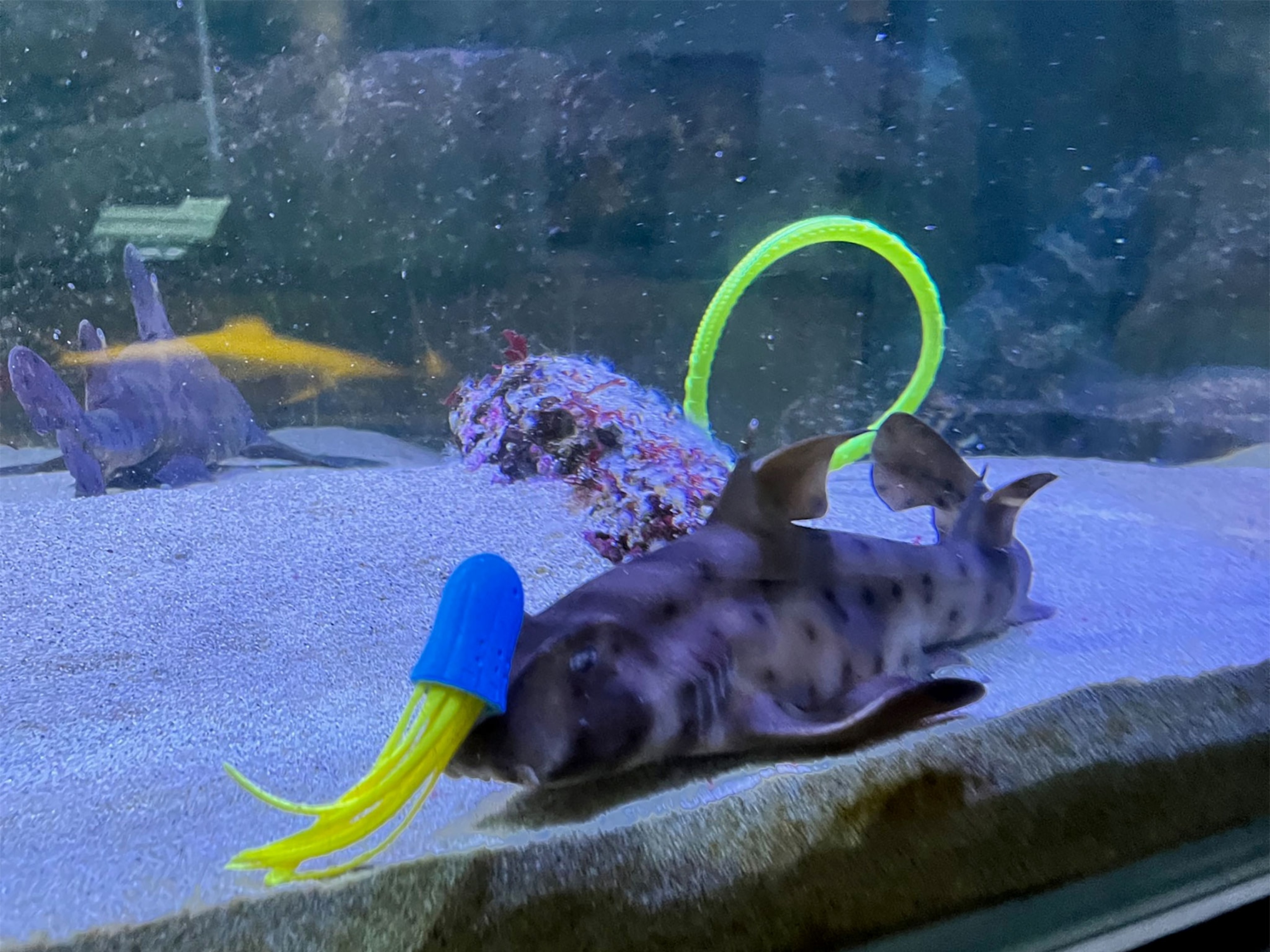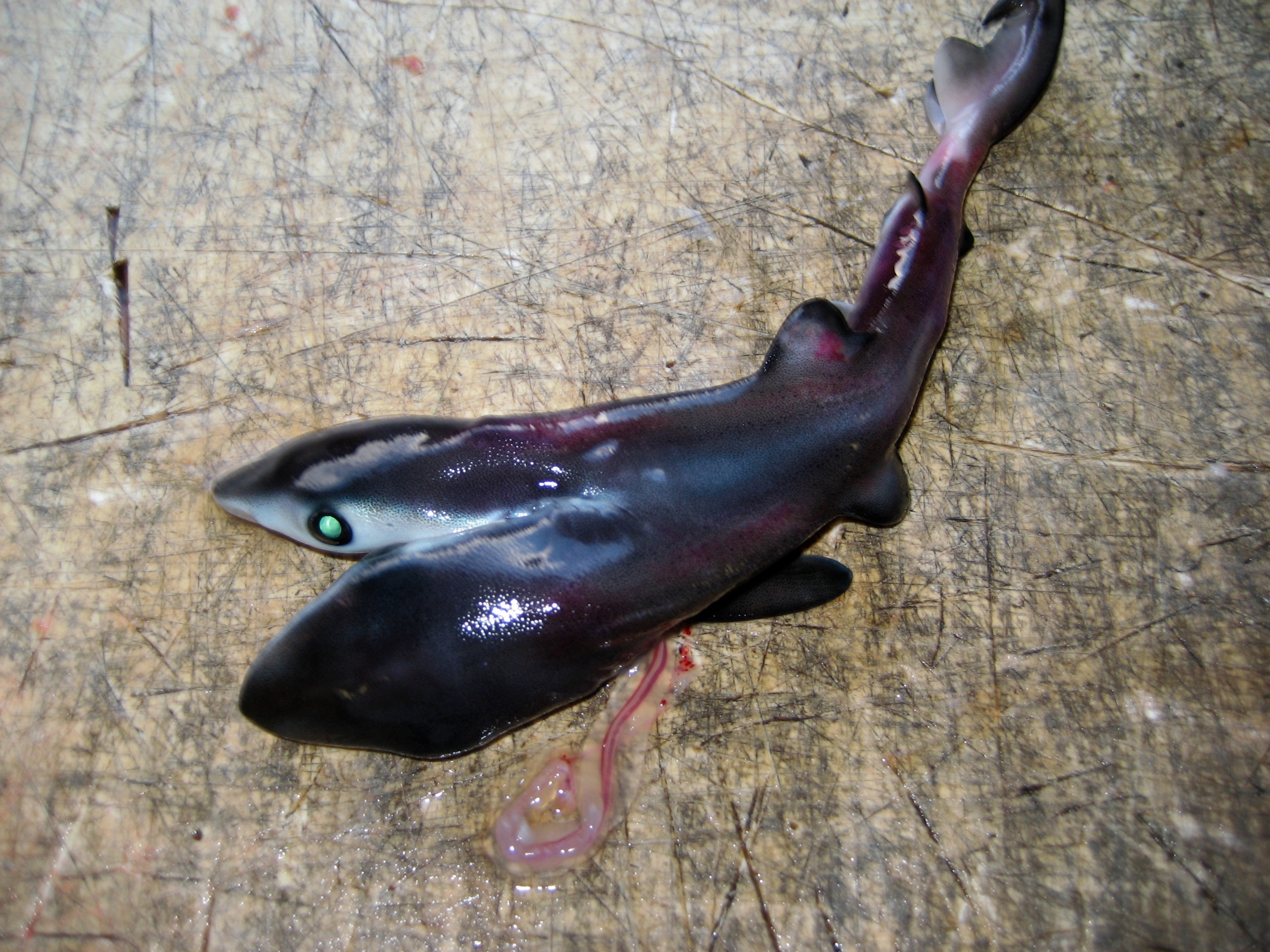
Two-Headed Blue Shark Surfaces
There have only been a handful of reported cases of two-headed sharks.
We recently wrote about a two-headed bull shark found by fishermen. One of our readers, Christopher Johnston, then sent us an email with photos he had taken on September 27, 2008 of a similarly surprising find: a two-headed blue shark. As far as we know these photos have never been published anywhere before.
As we previously reported, there have been only about a half dozen reported cases of two-headed sharks. The phenomenon arises through conjoined development of twins, the same process that produces what used to be called Siamese twins in people. (See more examples of two-headed animals.)
In January 2011, scientists published a review of two-headed blue sharks in the journal Marine Biodiversity Records. The malformed female blue shark embryos the scientists examined had been found inside a pregnant adult female that had been caught in the Gulf of California off the western coast of Baja California Sur, Mexico.
The researchers, led by Felipe Galván-Magaña, wrote, “Abnormal sharks showed a symmetric bicephaly that could be caused by the high number of embryos found in the uterus of the blue shark, which is the most fecund species of shark in the world. The abnormality probably began during the embryonic development.”
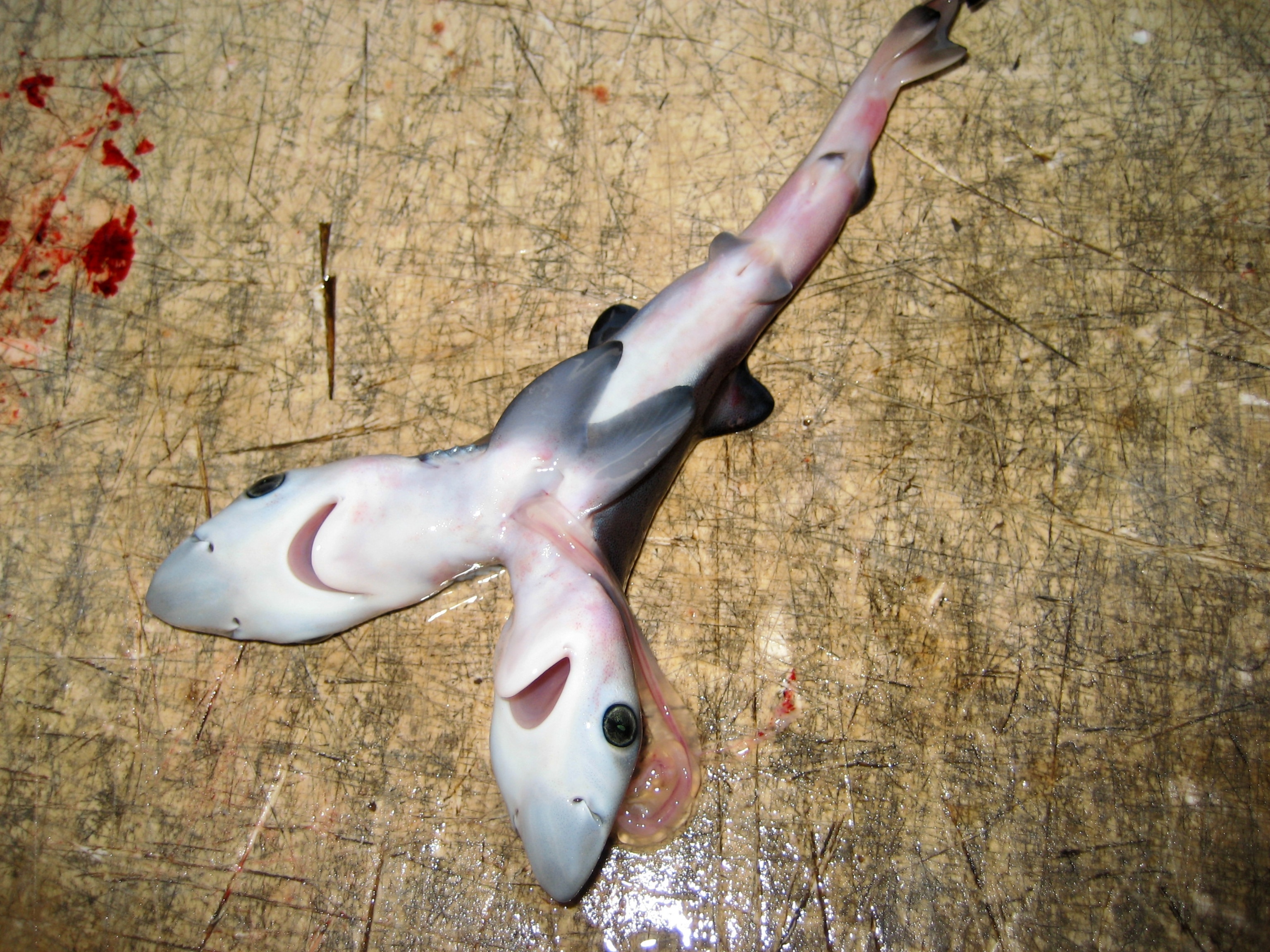
In the case of the two-headed blue shark that appears in the photos in this post, Johnston told us that he found it while working as a longline fisherman in the Indian Ocean. “I can’t remember exactly where we were, somewhere between 200 and 900 miles off West Australia,” Johnston told Ocean Views.
“We pulled up a pregnant blue shark, cut it open, and there was the tw0-headed one,” he said.
“It was about two-thirds the size of the rest of the pups in length. I put it in the tank on the deck. It swam a little while, but it couldn’t swim properly, it just swam in one spot as if it were on a treadmill. I tried feeding it squid but it wasn’t interested.”
Johnston showed it to the captain and other crew, but he said they were too tired and focused on getting their work done to pay much attention.
After a short while the two-headed pup died, Johnston said. He snapped the photos shown here, then threw it back in the sea.
“I didn’t think it was that special but apparently it is,” Johnston said. “It looked like it had one dorsal fin and one umbilical cord. It had teeth like normal pups.”
Johnston explained that the reason the fishermen cut open pregnant sharks was because they were only allowed to keep 20 blue sharks on a boat at a time, apparently including fetal ones. He indicated that the fins had to remain on the bodies, to prevent the finning that is driving down shark numbers around the globe. “We used all parts of the sharks we caught,” Johnston added.
“Normally when we cut open a pregnant blue shark there could be almost a hundred pups in there,” said Johnston. “We toss them in the water and they usually swim off fine.”
“I cut open quite a few and that was the only strange one I ever saw,” he added.
“Like Live Bait”
“Baby sharks have a very low chance of surviving, and so a two-headed shark that can’t swim properly would be like live bait [if it were to be born],” said Johnston.
C. Michael Wagner of Michigan State University recently confirmed to us that two-headed animals rarely survive in the wild.
As for Johnston, these days he lives in Dubai, where he leads private recreational fishing trips for royals. “I’ve done crab fishing, longlining, I’ve always been fishing,” Johnston said.
He originally hails from Perth, Australia, although his family moved him to the Middle East when he was four years old. “My dad was a fisherman and he came to work in the Saudi prawn fisheries. Except for going back to Australia to visit family or study I’ve been here ever since.”
Related: Chilling Photos of Sharks
What Does it Mean?
As to the reader comments that asked if such two-headed creatures could be traced to pollution, radiation, or other environmental ills, Wagner had told us that it is very difficult to pin abnormalities on a single cause. Sometimes the problems also arise spontaneously, an imperfect expression of life’s machinery.


